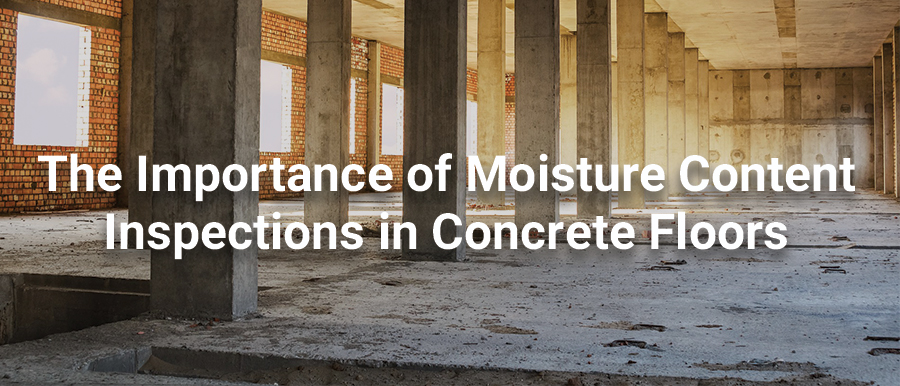
Moisture testing, two of the most significant words in the construction industry. Two simple words which may make, or quite literally break, your freshly laid concrete flooring. Two words which are perhaps, and rather unfortunately for some, the most commonly forgotten words when laying concrete slabs or over-flooring, leading to countless disastrous results. Whether your concrete was poured six months or ten years ago, whether a previous over-flooring has been installed or not, ignore moisture testing and face the consequences.
Concrete slabs contain moisture, they always have and they always will. If your goal is to eradicate all moisture, aiming for 100% dry concrete, then you my friend have chosen an impossible task. Not only is bone-dry concrete physically unobtainable, it's also highly inadvisable and would seriously hinder construction. The true target is a perfect equilibrium, a moisture content level detailed within the manufacturer's specifications and ready to be overlaid with a flooring product.
The drying process of concrete naturally forms tiny pathways within the structure, which we refer to as capillaries. Excess water passes through these capillaries on its way out of the concrete, with a common vapour retarder below the slab forcing this moisture upwards in order to escape. It's this water moving within the concrete which causes moisture conditions to vary depending on depth and why you will find the surface often dryer when compared to deeper levels. However, and this is important to remember, moisture movement is very much a two-way street. Any external water sources such as rainwater, poor plumbing or insufficient drainage can affect the moisture content, with the capillaries in the concrete acting like a rock-solid sponge. The humidity levels in the environment can be of further concern, if they are too high the slabs will begin absorbing moisture rather than releasing it, halting the drying process completely.
One of the most influential factors as to how long a concrete slab needs to dry is in fact the ratio of water to cement in the batch itself! See, there will always be some moisture present within the slab, no matter what you do. But whatever the source, once the concrete is poured and cured, it needs the right amount of time for the excess moisture to evaporate. The typical average length of time is 1 month for every 25mm of thickness, however please take this as more of a guideline. Despite waiting what you presume to be the correct amount of time, you must still perform moisture testing.
Should excess moisture be present in a concrete slab when an impermeable surface treatment is installed, it will become trapped under that covering. That’s when you can expect flooring adhesive failures, efflorescence or other types of moisture-related damage. These issues aren't related to just the concrete either, wood floors for example can suffer adhesive failure, gaps, creaking, wood warping or cupping. Floor coatings, sheet vinyl and vinyl tile floors can be afflicted with blistering or delamination, and this really is just the tip of the iceberg:
- Mould and bacteria build-up can attract termites and carpenter ants to building materials
- Water-soluble materials could decay or deteriorate
- There may be extreme warping, swelling and rotting of wooden materials
- Inevitable damage to paints and varnishes
- Chemical reactions may occur, causing structural fasteners, wiring, metal roofing & conditioning coils to corrode
- These same chemical reactions may cause flooring or roofing adhesives to fail
- Damage to brick and concrete
- Reduced quality and effectiveness of thermal insulation


So how do we avoid these potential disasters? With proper moisture testing of course! By collecting the right data, you can accurately predict the moisture content equilibrium after the flooring has been installed. Unless you properly measure the moisture condition of a slab, you can’t possibly know whether the slab is ready. Based on what we know about how concrete dries, the only scientifically proven method which can provide this information is the ASTM F2170 in-situ probe concrete RH test and this is where we here at Test Meter can help you.
There are three common types of moisture meters used for the inspection of building and structure materials - pin-type, pinless and the all-in-one. All three types offer specialised purpose and are truly unique to the user's application in determining moisture content percentages in materials. We have the best moisture meters and kits available from the biggest industry names including Tramex, Protimeter, Teledyne FLIR & more. All of our moisture meters comply with the necessary regulations to ensure that you can accurately predict that equilibrium point.
For a full breakdown of Tramex Flooring Inspection Kits, including the right time to utilise your moisture meter and which accessories you need, check our our blog page here. Should you have further questions, please don't hesitate to get in contact with us at sales@test-meter.co.uk or 0113 248 9966.
Remember, moisture testing, it's that simple.
